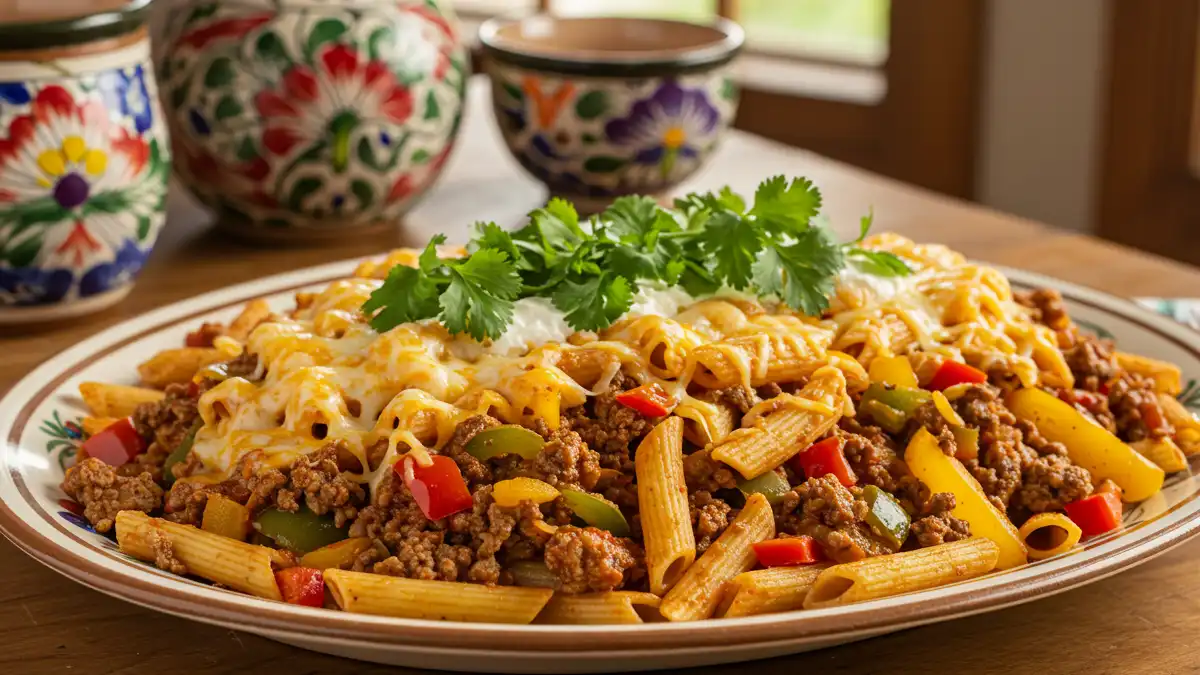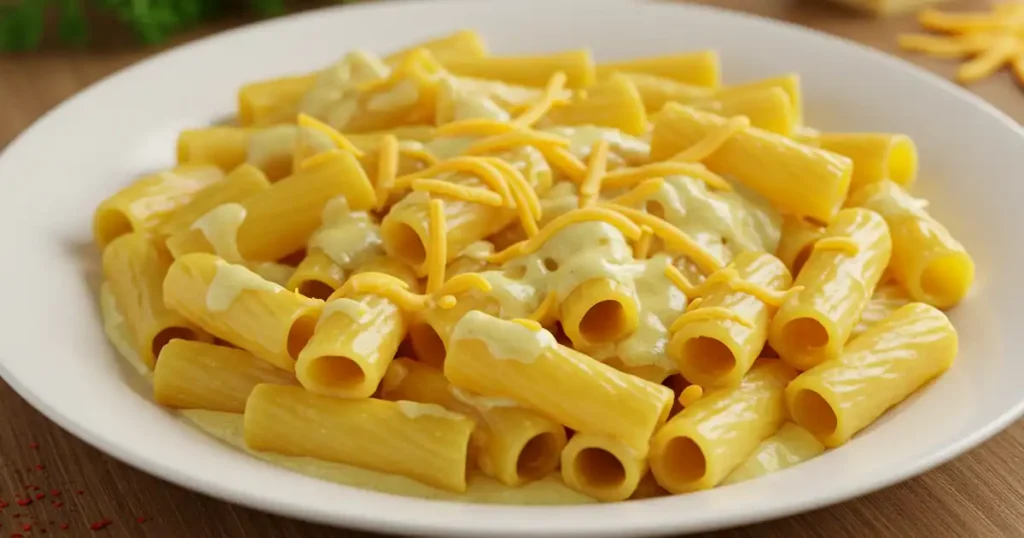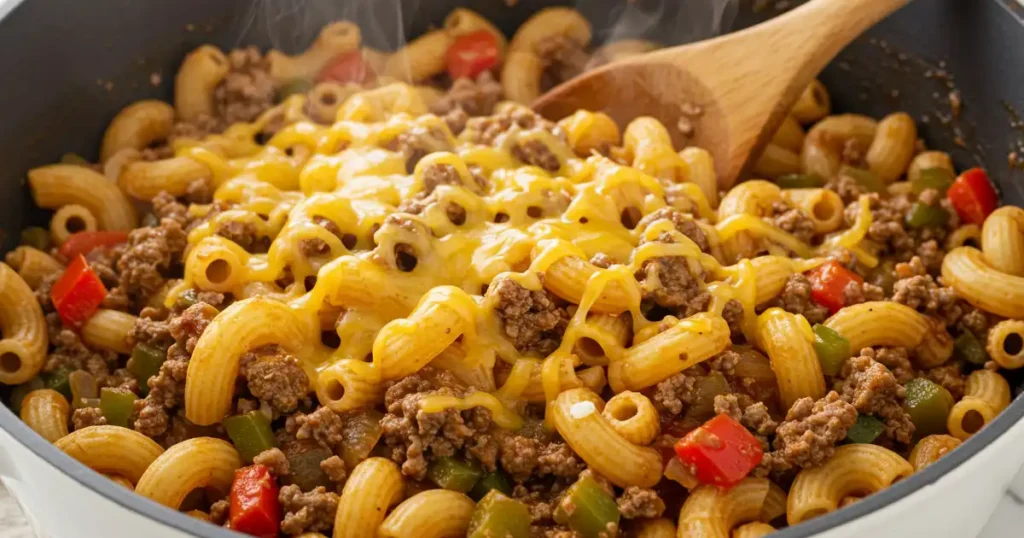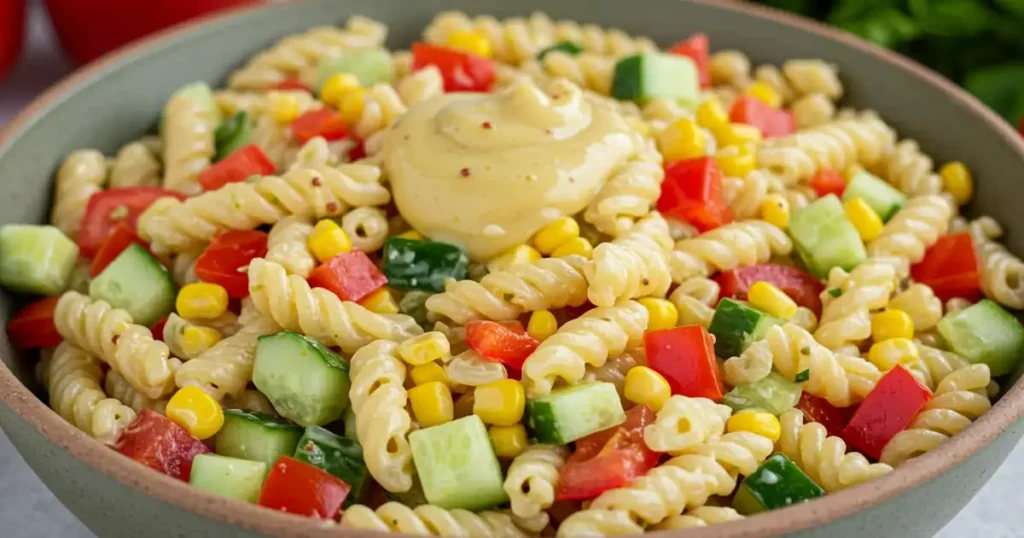
Table of Contents
Coditos pasta, also known as elbow macaroni, is a beloved ingredient in kitchens worldwide. Its small, curved shape makes it ideal for capturing rich sauces, creamy cheeses, and flavorful seasonings. Whether you’re looking for a comforting meal for a chilly evening or a nostalgic dish reminiscent of home-cooked traditions, these three coditos pasta recipes will satisfy your cravings and warm your heart.
1. Classic Cheesy Coditos with a Creamy Twist
Few things are as comforting as a steaming bowl of cheesy coditos. This recipe takes traditional mac and cheese to the next level with a velvety sauce and a golden-baked crust.

Ingredients:
- 2 cups coditos pasta
- 3 tablespoons butter
- 3 tablespoons all-purpose flour
- 2 cups milk (whole or 2%)
- 1 cup heavy cream
- 2 cups sharp cheddar cheese, shredded
- 1 cup mozzarella cheese, shredded
- 1 teaspoon Dijon mustard
- ½ teaspoon paprika
- Salt and pepper to taste
- ½ cup panko breadcrumbs
- 2 tablespoons butter, melted
Instructions:
- Cook the coditos pasta in salted water until al dente. Drain and set aside.
- In a saucepan, melt butter over medium heat. Stir in the flour and cook for about a minute, stirring constantly.
- Gradually whisk in the milk and heavy cream, ensuring a smooth consistency. Cook until the mixture thickens.
- Remove from heat and stir in the cheddar and mozzarella cheese until fully melted. Add Dijon mustard, paprika, salt, and pepper.
- Combine the pasta with the cheese sauce, ensuring each piece is coated evenly.
- Transfer the mixture to a greased baking dish.
- In a small bowl, mix the melted butter with panko breadcrumbs and sprinkle over the pasta.
- Bake at 375°F (190°C) for 20 minutes or until the top is golden and crispy.
- Serve hot and enjoy the gooey, cheesy goodness!
2. Hearty Mexican-Style Coditos with Ground Beef
This Mexican-inspired coditos pasta dish brings together bold flavors and a satisfying, meaty texture. It’s perfect for a family dinner or meal prepping for the week.

Ingredients:
- 2 cups coditos pasta
- 1 pound ground beef
- 1 small onion, finely chopped
- 2 cloves garlic, minced
- 1 teaspoon cumin
- 1 teaspoon chili powder
- ½ teaspoon smoked paprika
- 1 can (14 oz) diced tomatoes
- 1 cup tomato sauce
- ½ cup beef broth
- 1 cup corn kernels (fresh or frozen)
- 1 cup shredded Monterey Jack cheese
- Salt and pepper to taste
- Fresh cilantro for garnish
Instructions:
- Cook the coditos pasta according to package instructions. Drain and set aside.
- In a large skillet, cook the ground beef over medium heat until browned. Drain excess fat.
- Add chopped onion and garlic to the skillet, cooking until softened.
- Stir in cumin, chili powder, and smoked paprika, ensuring the beef is well seasoned.
- Pour in diced tomatoes, tomato sauce, and beef broth. Simmer for 10 minutes.
- Add the corn and cooked pasta, stirring to combine everything.
- Sprinkle shredded cheese over the pasta and cover the skillet for 3 minutes until the cheese melts.
- Garnish with fresh cilantro and serve warm.
3. Creamy Coditos Pasta Salad with Tangy Dressing
This cold pasta salad is a refreshing and creamy dish, ideal for picnics, barbecues, or as a side to grilled meats. The combination of fresh vegetables, tangy dressing, and tender pasta makes it a crowd-pleaser.

Ingredients:
- 2 cups coditos pasta
- ½ cup mayonnaise
- ¼ cup Greek yogurt
- 1 tablespoon Dijon mustard
- 1 tablespoon apple cider vinegar
- 1 teaspoon honey
- Salt and pepper to taste
- ½ cup diced bell peppers (red, green, or yellow)
- ½ cup cherry tomatoes, halved
- ¼ cup red onion, finely chopped
- ½ cup cucumber, diced
- ¼ cup black olives, sliced
- ¼ cup feta cheese, crumbled
- Fresh parsley for garnish
Instructions:
- Cook the coditos pasta until al dente. Rinse with cold water and drain.
- In a large mixing bowl, whisk together mayonnaise, Greek yogurt, Dijon mustard, apple cider vinegar, honey, salt, and pepper.
- Add the cooked pasta, bell peppers, cherry tomatoes, red onion, cucumber, and black olives to the bowl. Toss to coat everything evenly.
- Gently fold in the crumbled feta cheese.
- Chill in the refrigerator for at least 30 minutes before serving.
- Garnish with fresh parsley and enjoy!
Conclusion
Coditos pasta is a versatile ingredient that can be transformed into heartwarming meals suitable for any occasion. Whether you prefer a rich and cheesy baked dish, a bold and meaty Mexican-style meal, or a light and creamy pasta salad, these recipes will satisfy your cravings. Try them out today and bring warmth and comfort to your dining table!
The Hidden Gem of Coditos Pasta: From Humble Origins to Culinary Stardom
Coditos pasta, often overlooked in favor of more famous shapes like spaghetti or penne, holds a unique place in the culinary world. Translating to "little elbows" in Spanish, this small, curved pasta has a rich history and surprising versatility that deserves recognition. In this article, we’ll explore its origins, cultural significance, and how it can elevate your cooking with creative flair.
A Brief History of Coditos Pasta
The story of coditos begins in the Mediterranean, where pasta-making traditions date back centuries. While Italy is often credited as the birthplace of most pasta varieties, coditos found particular favor in Spanish and Latin American cuisines. Its name reflects its diminutive size and playful shape, reminiscent of tiny elbows.
Originally crafted by hand, coditos became popular because of its practicality. Its compact form made it ideal for storage and transport, qualities that were essential in regions where resources were limited. Over time, coditos evolved from a utilitarian food into a beloved ingredient used across various dishes, including soups, salads, and casseroles.
Today, coditos remains a staple in many kitchens worldwide, cherished for its ability to pair seamlessly with both simple and complex flavors.
Why Coditos Pasta Stands Out
What sets coditos apart is its adaptability. Its curved shape creates nooks and crannies that trap sauce beautifully, making it perfect for creamy, chunky, or broth-based recipes. Here’s why coditos deserves a spot in every pantry:
1. Perfect for Soups: Coditos’ bite-sized pieces make it an excellent choice for hearty soups and broths. It adds texture without overpowering delicate flavors.
2. Salad Sensation: Whether paired with vinaigrettes or creamy dressings, coditos brings balance to pasta salads, holding ingredients together while maintaining its structure.
3. Casserole Champion: Its sturdy build ensures coditos doesn’t turn mushy during long baking times, making it ideal for layered casseroles.
4. Versatile Pairings: From classic tomato sauces to exotic spice blends, coditos complements almost any flavor profile.
Creative Ways to Use Coditos Pasta
While coditos may seem straightforward, its potential extends far beyond traditional recipes. Here are some inspiring ideas to spark your creativity:
1. Spicy Mexican Mac 'n Cheese: Combine coditos with cheddar cheese, jalapeños, and a hint of cumin for a zesty twist on comfort food.
2. Mediterranean Lemon Herb Salad: Toss cooked coditos with fresh lemon juice, olive oil, parsley, cherry tomatoes, and feta for a refreshing dish.
3. Seafood Paella Alternative: Swap out rice for coditos in your favorite paella recipe for a fun, pasta-based take on the classic Spanish dish.
4. Dessert Delight: Sweeten things up by baking coditos with cinnamon, sugar, and milk for a dessert pasta that’s sure to surprise and delight.
These ideas showcase how coditos can transcend boundaries, bringing global flavors to life in unexpected ways.
Coditos Around the World
One of the joys of coditos is its universal appeal. Different cultures have embraced this pasta shape, adapting it to suit their unique tastes:
- Spain & Latin America: Coditos frequently appear in soups and stews, providing nourishment during cold winter months.
- Italy: Known as ditalini or rigatoni corti, similar shapes are used in minestrone and other rustic dishes.
- Middle East: Coditos (or its equivalents) feature prominently in bulgur pilafs and chickpea-based stews.
- United States: In American households, coditos often star in macaroni and cheese or creamy baked pastas.
This cross-cultural versatility highlights coditos' role as a bridge between diverse culinary traditions.
Tips for Cooking Perfect Coditos
To get the best results with coditos, follow these simple guidelines:
- Boil Gently: Cook coditos in plenty of salted water to prevent sticking and ensure even texture.
- Don’t Overcook: Aim for al dente—firm but not hard—to maintain its shape and bite.
- Drain Thoroughly: Excess moisture can dilute sauces or ruin salads, so drain carefully before serving.
With these tips, you’ll unlock the full potential of coditos in your kitchen.
Conclusion: Celebrate the Little Elbow
Coditos pasta might be small, but its impact is anything but. From its humble beginnings in Mediterranean kitchens to its starring roles in modern recipes, coditos continues to prove itself as a versatile and delightful ingredient. Whether you’re crafting comforting classics or experimenting with bold new flavors, coditos offers endless possibilities.
So next time you reach for pasta, don’t overlook the little elbow. Embrace its charm, versatility, and rich history—and let it inspire your culinary adventures!
FAQs
Why is it called Rasta pasta?
The name “Rasta pasta” comes from its resemblance to dreadlocks, as the pasta shape (often reginette or similar flat, twisted ribbons) looks like long, braided strands. The playful name connects the visual similarity to Rastafarian culture, even though there’s no direct religious association.
What is Gigi Hadid’s pasta called?
Gigi Hadid, the supermodel, has spoken fondly of her family’s traditional Italian-American pasta dishes, particularly spaghetti with meatballs or simple tomato-based pasta recipes. While she doesn’t have an official signature pasta dish, her love for comfort food highlights classic Italian favorites.
What is the famous Amalfi pasta?
Amalfi, a coastal region in Italy, is known for its fresh, local ingredients and unique pasta shapes. One famous pasta associated with Amalfi is trofie al limone , short twisted pasta served with lemon sauce, inspired by the region’s abundant lemons. Another notable dish is linguine alle vongole , linguine with clams, reflecting Amalfi’s seafood traditions
What is Rasta Pasta religion?
There is no specific “Rasta Pasta religion.” However, the term “Rasta” originates from Rastafarianism, a spiritual movement rooted in Jamaica that emphasizes peace, unity, and natural living. The connection between “Rasta” and pasta is purely coincidental and based on the pasta’s appearance resembling dreadlocks, not any religious significance.
Who owns the name Rasta Pasta?
The name “Rasta Pasta” isn’t trademarked or owned by a single entity. It’s a colloquial term used to describe certain pasta shapes resembling dreadlocks. Some brands may use the name for marketing purposes, but it remains a generic descriptor rather than a protected brand name.
Why is it called Rasta?
It’s called “Rasta” because the pasta’s long, twisted, ribbon-like shape visually resembles Rastafarian dreadlocks. This playful naming convention highlights the fun and creative side of pasta varieties, without implying any deeper connection to Rastafarian culture.
Do Rastafarians eat spaghetti?
Yes, Rastafarians can eat spaghetti or other types of pasta, provided they follow their dietary guidelines. Many Rastafarians adhere to an Ital diet, which emphasizes natural, unprocessed foods, often vegetarian or vegan. Spaghetti with simple sauces made from fresh vegetables aligns well with this philosophy. However, meat-based sauces or processed ingredients might be avoided depending on individual beliefs.